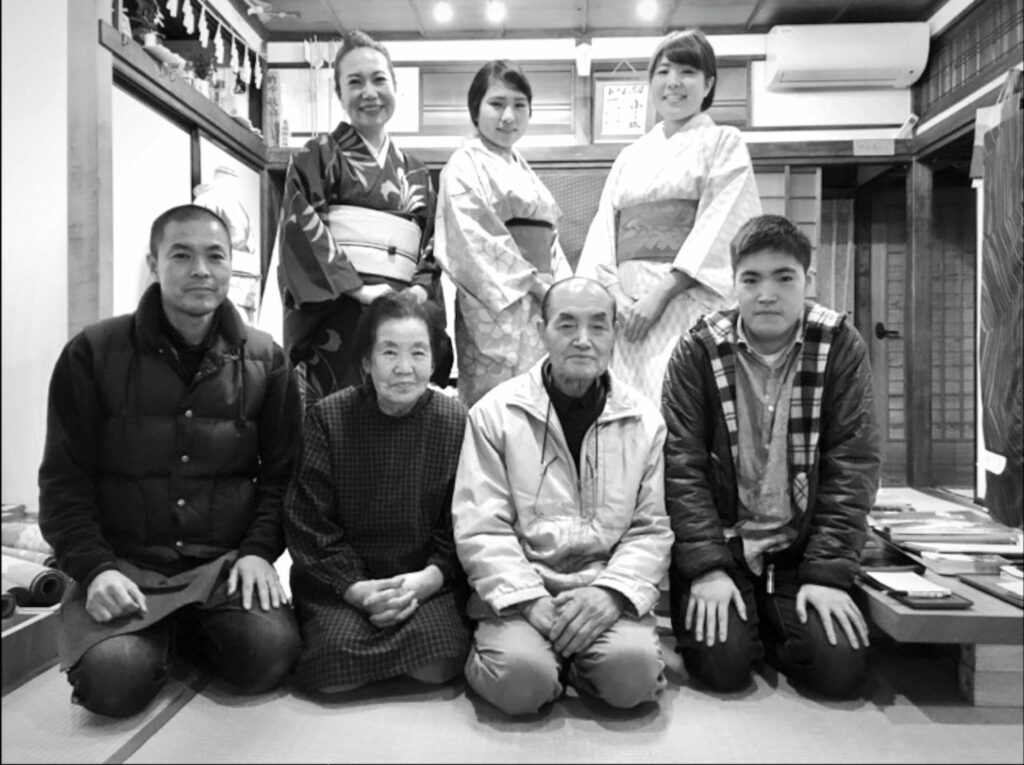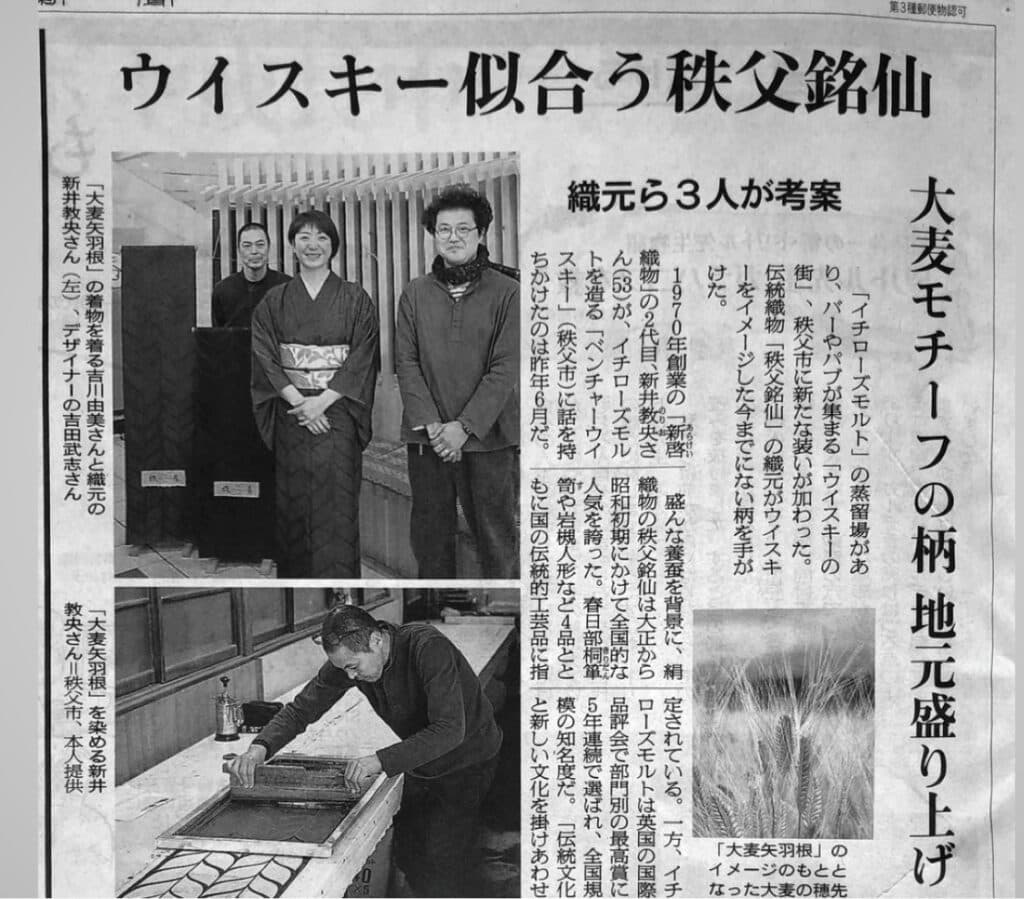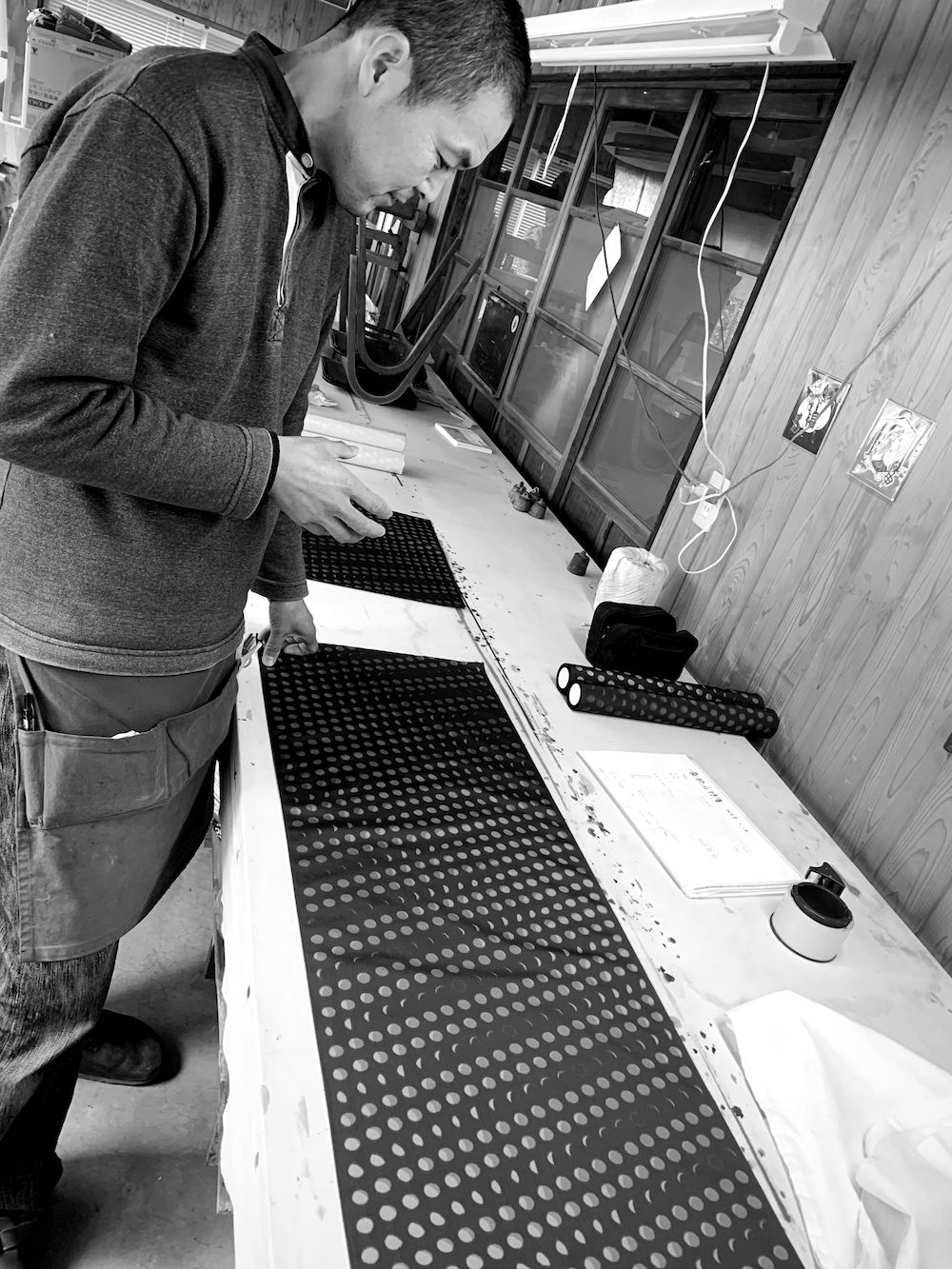Would you believe that the most risk-taking, going-against-the-norm people I’ve met in my life are usually in the crafts -traditional, even- world?
I grew up being told that handicrafts wouldn’t make money; that It’s the industry of migi kata sagari – right shoulder down. If you are wondering what it’s like to be right shoulder down, imagine a line graph showing profit on the vertical axis and timeline at the bottom. As time goes by (to the right), the line (=profit) goes down. There you have migi kata sagari. Modernisation, resulting in lifestyle change, is considered the evil cause for the vicious trend: among all the crafts, kimono textile was hit the hardest and most drastically, as it stopped being the daily wear for the Japanese.
Norio Arai exudes gentleness – his average-built physique, roundish shoulders and calming, quiet voice. And if I were to name one great risk-taker of all, he would be THE one; quitting his 15-year career as an interior fabric designer so he can move back to his parents’ weaving studio with his wife and four children…
His father wholeheartedly objected.
“Have you told your boss yet? No? Then it’s not too late. Don’t quit. It’s not possible when you have a family to support,” was his father’s words.
Despite his father’s plea, Arai came home with his entire family. And none of them, his father or Arai himself, knew then that he eventually would venture into kimono production.
Up until then, his family had produced and sold cotton fabrics to futon manufacturers: starting kimono brand would mean that almost everything, from material procurement, developing techniques and finding customers, had to be done from scratch.
“The plan I first had with my wife was to start a casual fashion brand using cotton fabrics. But when I came back and actually started working. I saw that I really didn’t know anything.
Because I didn’t know anything, I tried all sorts of materials and techniques. Among all that I tried, the most challenging was the preparation for silk kimono. I thought to myself that if only I could master this technique, then I would be able to do anything else after. So I went with the hardest”
Arai says it hasn’t been an easy path, which I’m sure of. But knowing so many of us would give up on a seemingly risky path before trying, I had to ask what the driving force behind his wild decision was.
“As an interior fabric designer, I visited many countries and saw bountiful designs. But when I re-visited Hogushi-ori, the pattern-making method that was passed down in our region, I was most fascinated with it. I had never seen something like that elsewhere.” So he pursued his curiosity…or fascination.
“If none of it worked, I was ready to do night shifts at construction sites, so I could still weave during the day. Knowing I had that option helped me move forward.”
It didn’t come to it. 15 years passed. His children have grown up, him and his wife are still happily married and working together. His father and mother, who recently passed away, used to come visit the workshop and help wherever they could.

His fascination with the weaving still continues and it’s proven to be even contagious. The year 2022 saw him collaborating with designers for a clothing brand and the local whiskey – the internationally renowned Ichiro’s Malt.

I wonder if he would be the same guy with a gentle smile if he didn’t take a step towards the wild side.
More on Arai’s works and stories

0 Comments